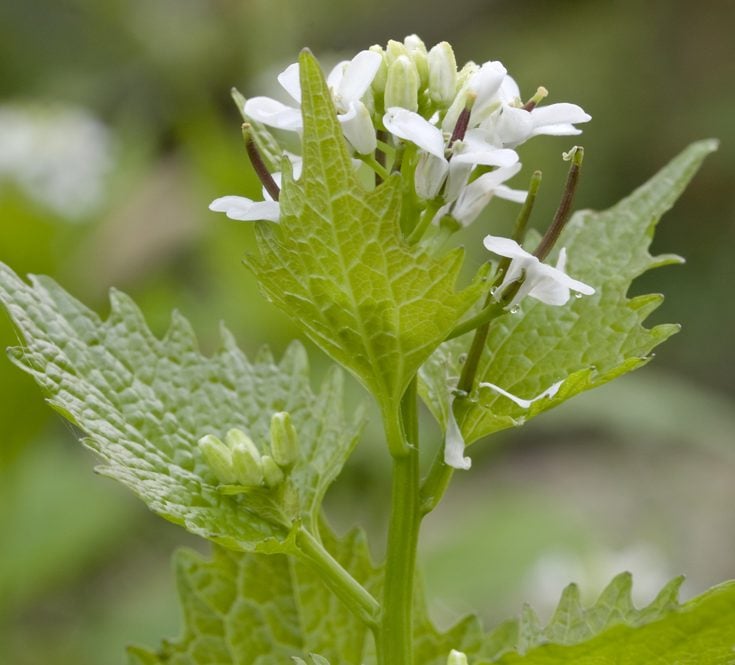Description
Also known as Hedge Garlic and Jack-by-the-hedge.
A medium to tall biennial or short-lived perennial with small white, yellow-centred flowers. Flowers occur from April to June and are followed by long green seedpods which shed their seed from July onwards. One of the easiest ways to identify this plant is by it fresh green, heart-shaped leaves that smell of garlic when crushed.
Habitat Information
Garlic mustard is most characteristic of hedgerows, woodlands and riverbanks where the soil is moist and fertile. Although found on a range of substrates it does avoid very acid soils. It requires a combination of moderate shade and occasional disturbance if it is not to be outcompeted by species that are more robust. A plant native to Britain, its population seems to have remained stable over the past forty years. Garlic mustard is famously the larval food plant of the Orange-tip butterfly particularly on damper more open sites such as riverbanks. Look out for the orange eggs laid just behind the flower. Less well known is its importance as the food plant for the caterpillars of green-veined whites.
Growing Information
Grows readily from seed sown at any time of the year, it does however require a long period of chilling to break dormancy. If sowing in situ on sites that might be colonised by weeds, it is therefore best to sow in autumn. On sites that are moist and partially shaded the plants should look after themselves but if you find other species taking over try some moderate disturbance of the soil in late summer or autumn.
Garlic mustard is found in our EH1 and EW1 mixtures but could be added to EM8 and EP1. If grown specifically to encourage orange-tips, try growing a small patch in full sun. This will be more attractive to the butterflies but might require you to weed the bed.


